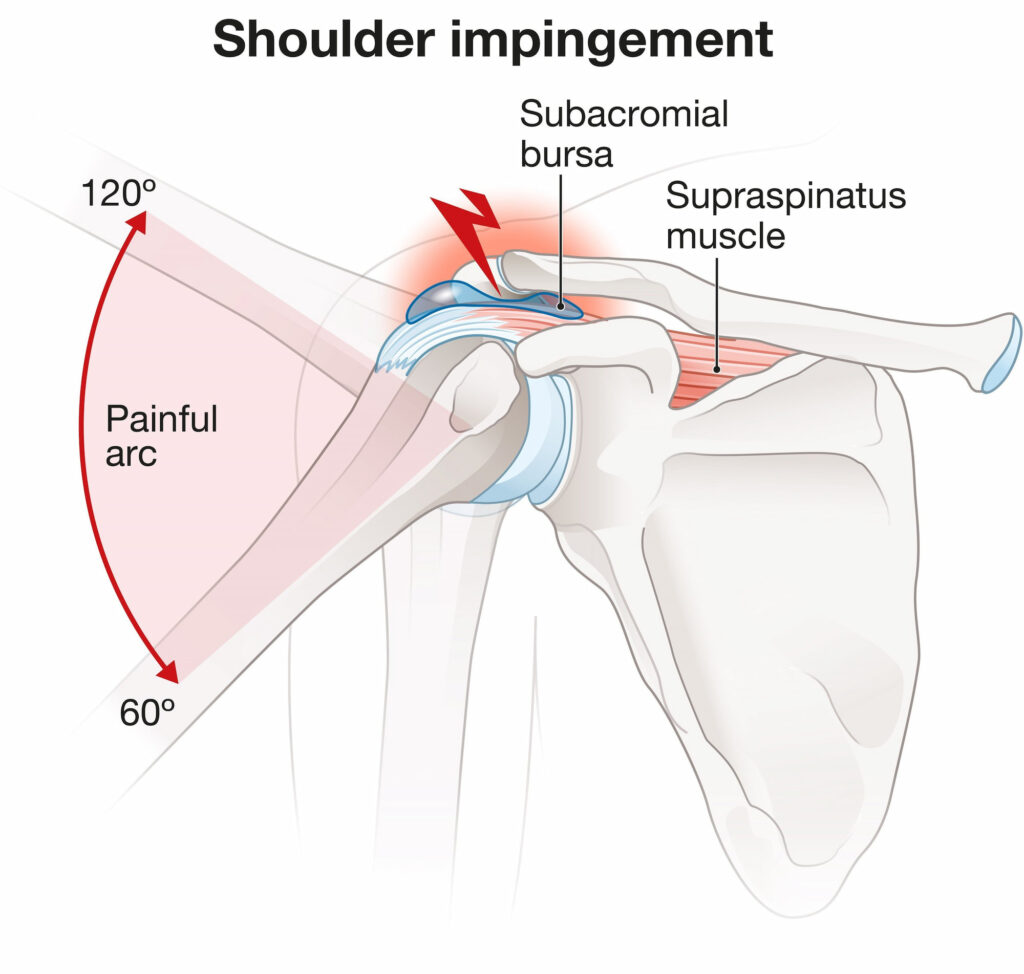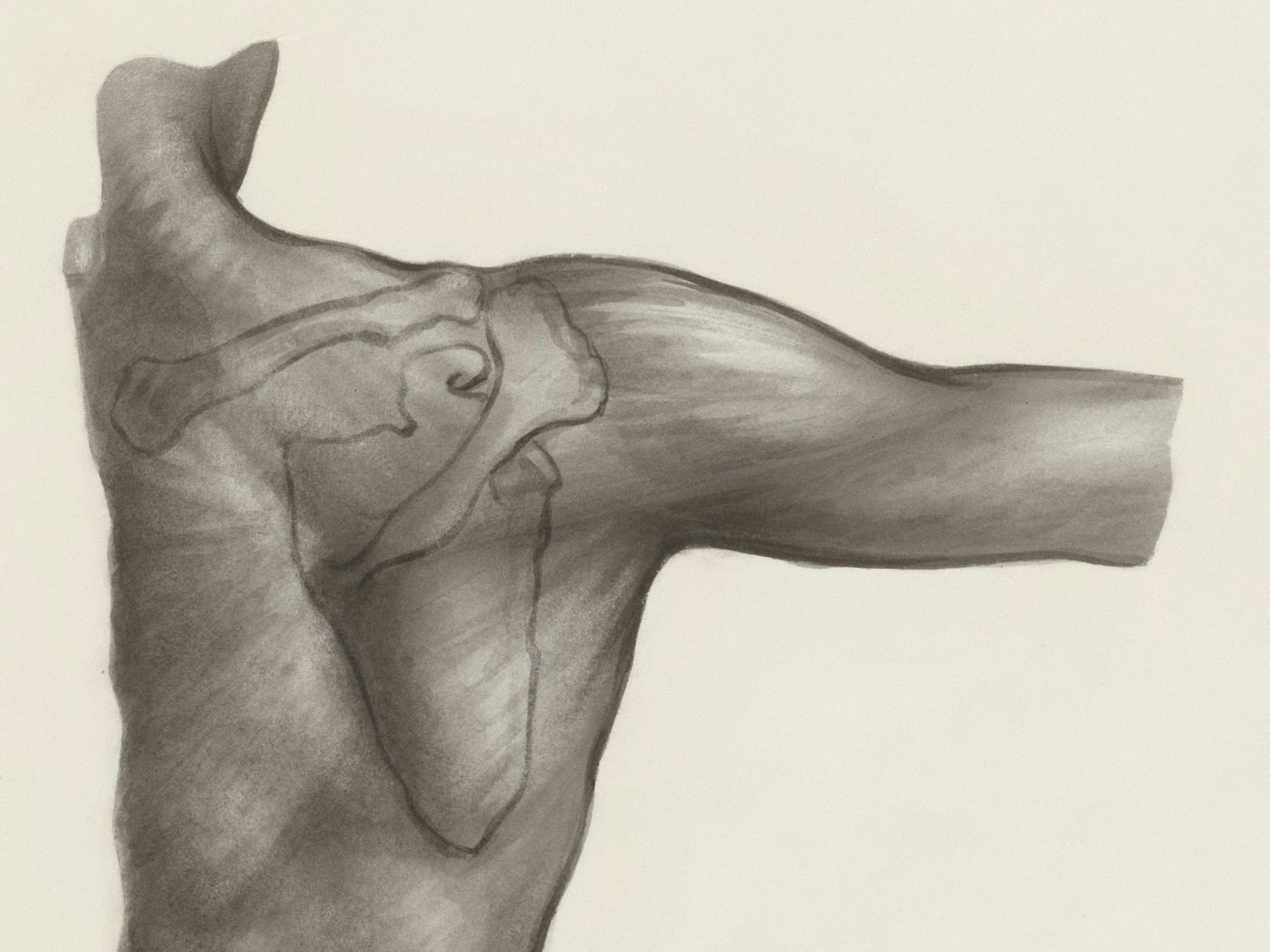Shoulder impingement is the result of the rotator cuff tendons and surrounding soft tissues, like the bursa (a fluid-filled sac that acts as a joint cushion), being compressed between the shoulder bones, causing pain and limited movement. Bursitis, specifically subacromial bursitis, involves inflammation of the bursa above the shoulder joint muscles, leading to further irritation and discomfort.
When the space between the acromion (the outer part of the shoulder blade) and the humerus (the upper arm bone) narrows, it can lead to painful contact and inflammation of the bursa or the tendons in the rotator cuff. This condition is common in people who frequently use their arms overhead, such as athletes and manual labourers.
What causes shoulder impingement and bursitis?
The primary cause of shoulder impingement is the narrowing of the space between the acromion and the humerus, which can happen for several reasons:
- Bony spurs, thickening of the subacromial bursa, or issues with the acromioclavicular (AC) joint can narrow the space.
- Rounded shoulders or a slouched posture can disrupt the alignment and movement of the shoulder, increasing the likelihood of impingement.
- Poor function of the rotator cuff or scapular stabiliser muscles can compromise shoulder mechanics, making impingement more likely.
- Sudden increases in overhead movements (e.g., in sports or manual work) can strain the shoulder and lead to inflammation and impingement.
What symptoms would I notice?
- Pain in the shoulder, especially around the outer side and upper arm.
- Difficulty with overhead activities like reaching up or out to the side.
- Limited range of motion and difficulty raising the arm, particularly between 60 and 120 degrees.
- Lying on the affected shoulder often exacerbates pain, which can disrupt sleep.

How are shoulder impingement and bursitis diagnosed?
Your GP will review your symptoms and examine your shoulder, often including specific tests, like the ’empty can’ test or the Hawkins-Kennedy test, to check for pain during certain movements.
X-rays are commonly used to rule out other conditions like arthritis, while MRI or ultrasound may be recommended to get a clearer picture of the soft tissues and confirm inflammation in the rotator cuff or bursa.
Treatment options
Non-operative treatments are the first line of management, and surgery is rarely indicated. Surgery may be considered if symptoms persist and there are associated problems that would benefit from intervention such as a rotator cuff tear.
Non-operative treatments
- Avoiding repetitive overhead activities or heavy lifting.
- Strengthening the shoulder blade/rotator cuff muscles with physiotherapy.
- Exercises that improve muscle coordination and restore proper shoulder mechanics.
- Over-the-counter pain medication to reduce inflammation.
- A corticosteroid injection into the subacromial space to provide significant pain relief by reducing inflammation (this is typically considered if other methods haven’t provided sufficient relief).
Operative treatments
Arthroscopic (Keyhole) Subacromial Decompression
This minimally invasive surgery involves removing the inflamed bursa and, in some cases, shaving down part of the acromion bone to create more space in the shoulder joint.
Recent studies have shown variable results for shoulder decompression surgery, particularly when it is performed as a stand-alone procedure. Surgery may still be a viable option in cases where other treatments have not provided adequate relief.
Shoulder surgery with Dr Lambers
For those requiring surgery, Dr Anton Lambers performs minimally invasive procedures, promoting a faster recovery and minimising scarring. After surgery, you will be guided through a personalised rehabilitation plan to ensure proper healing and restore shoulder function.

